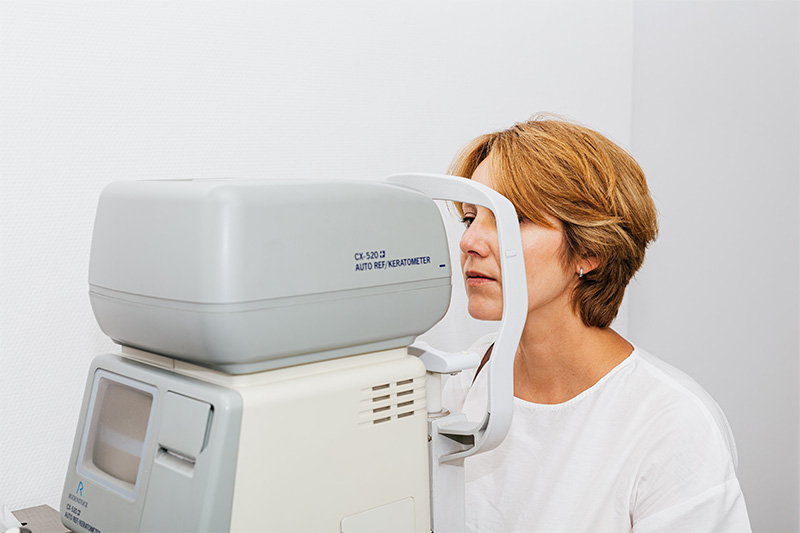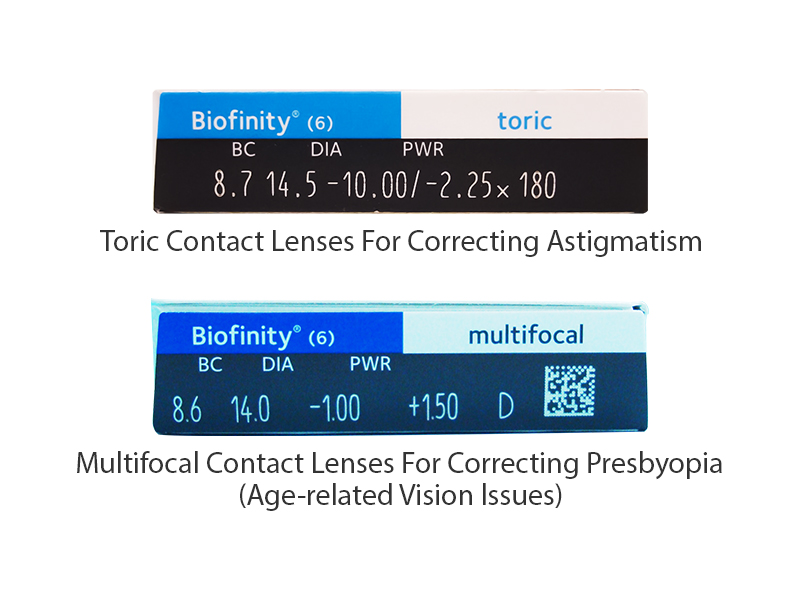Understanding Your Contact Lens Prescription: A Simple and Easy Guide to Decoding

There can be a lot of misinformation about contact lenses, which only makes everything more difficult. To try and combat this, we’ve written up a wee guide on exactly what you need to know to keep yourself safe!
In Australia, contact lenses are classified as medical devices by the Therapeutic Goods Administration (TGA). As per regulatory requirements, it is mandatory to have a valid and up-to-date prescription when purchasing contact lenses.
People who have been using contact lenses for a long time are likely familiar with understanding the codes on their prescriptions provided by their ophthalmologist.. However, for those who are new to contact lenses, and ordering them online, comprehending the codes and abbreviations on the prescription can be super overwhelming.
But don't worry, we're here to help! In this guide, we will simplify the complex terminology and explain the meaning behind common abbreviations and numbers found on contact lens prescriptions.It's important to choose the right contact lenses for your eyes and prioritize your eye health by following your prescription accurately.
Let's dive in and uncover the secrets of your contact lens prescription!
Understanding Contact Lens Fitting: What You Need to Know

When you visit your eye doctor for a contact lens prescription, they usually go beyond the standard eyeglass examinations to perform additional measurements and tests. Contact lenses require more precise measurements as they directly touch your eyeballs, necessitating the perfect fit and size for optimal comfort and vision correction.
During the comprehensive eye exam, your eye doctor will thoroughly asses various aspects of your eyes to determine the appropriate contact lens type (such as daily, monthly, astigmatism, or multifocal) and material (such as silicone hydrogel or low-water content). They also assess your vision correction needs. Regular check-ups are essential as your eye health can change over time, and so to ensure that you receive the best contact lenses with a precise prescription tailored to your eye health.
The basic process of examination for assessing your contact lenses
This varies depending on the individual's eye condition, but generally, it follows the following steps:
Objective Refraction Test: The objective refraction test uses instruments such as an autorefractor and retinoscope to measure how light focuses in the eye. It determines conditions like nearsightedness, farsightedness, astigmatism, and presbyopia.
Subjective Refraction Test: Based on the results obtained from the objective refraction test, the subjective refraction test is conducted to assess a person's subjective vision and determine the optimal prescription. The process involves trying different lenses and asking the patient to identify which lens offers the clearest vision. This information is then used to finalize the prescription.
Eye Examination: During the examination, a range of tests are performed to assess the condition of the eyes. These tests include examining the front and back of the eye, checking for any abnormalities, and determining the suitability for wearing contact lenses. The specific tests conducted may vary depending on an individual's eye health.
Questionnaire: Fill out a questionnaire or answer questions from an eye specialist regarding your eye condition, lifestyle, and previous experience with contact lenses.
Through these tests, which include measuring your cornea, pupil size, and iris size, and examining the eye surface, an optometrist determines your prescription and ensures a perfect fit for your eyes. Additionally, a thorough lens visual test may be performed, especially if you are new to contact lenses or considering a switch from your current ones. These comprehensive measurements and assessments guarantee that the contact lenses selected are suitable and provide optimal comfort for your specific needs.
Regularly visiting an optometrist to assess your eye health and update your prescription is crucial for maintaining optimal vision and ensuring the safe and effective use of contact lenses.To find more detailed information about eye checks, click here
Decoding Abbreviations and Numbers: Understanding their Meanings

Exploring Contact Lens Prescription Abbreviations: A Comprehensive Guide
You can find these abbreviations not only on your prescription from your eye doctor but also on the boxes of contact lens products. On the prescription, as well as on the box, you may come across abbreviations such as PWR, BC and DIA. However, for astigmatism or multifocal purposes, there may be additional abbreviations and numbers. Understanding these will enable you to place the correct order based on your prescription and maintain healthy eyes with the perfect contact lenses tailored to your needs.
PWR/SPH/DThis represents the visual correction such as -1.00, -7.50 and -9.00. As the magnitude of the number gets higher, the visual correction gets stronger. The visual power 0.00 is available on coloured lenses for customers with no need of correction.
BCBC (Base Curve) represents the curve of the contact lens such as 8.3, 8.6, or 9.0. As the number gets smaller, the curvature increases. This helps to ensure a comfortable fit.
DIADIA represents the diameter of the contact lens. Most of the time, DIA comes in only one size, but some lens types may have more than one available.
CY/AXBoth CY (Cylinder) and AX (Axis) numbers are needed when you order contact lenses for astigmatism.
ADDIf you wear multifocal or bifocal lenses, ADD (Addition) figure determines the amount of correction you need to be able to see clearly at a close distance. The Addition figure is a positive number between 0.50 and 3.00, which some contact lens brands refer to as a high, medium or low.
-: Minus SignIf there is a minus sign preceding a number of the power, it indicates that you have nearsightedness. Nearsightedness implies that your vision for close-up objects is better than for distant ones. The magnitude of the number reflects the degree of nearsightedness, with higher numbers indicating a more extreme level of nearsightedness.
+: Plus SignThe presence of a plus sign preceding a number of the power box indicates that you have farsightedness. Farsightedness means that your ability to see distant objects is better compared to seeing objects up close. The magnitude of the number indicates the degree of farsightedness, with higher numbers indicating a greater level of farsightedness.
*Please note that we don't stock positive power lenses (+) other than multifocal lenses and some specific lenses at the moment.
Is it necessary to possess a prescription specifically for contact lenses?

Indeed, it is essential to obtain a valid prescription when purchasing contact lenses as they are classified as medical devices. Contact lenses must be tailored to fit the individual user and be made from approved materials to ensure proper vision correction. Failing to adhere to these guidelines can result in poor vision and potential harm to the eyes.
Even if you intend to wear coloured contact lenses for cosmetic purposes without requiring vision correction, a prescription is still necessary to ensure a perfect fit for your eyes. Ill-fitting lenses can lead to various eye problems, including corneal abrasions, and the absence of proper sterilization may increase the risk of infections.
Moreover, it's important to note that contact lens and glasses prescriptions differ. If you have a prescription for glasses, it cannot be used to purchase contact lenses.
A separate prescription specifically for contact lenses is required. The primary reason for this distinction is that glasses are positioned approximately 12 millimeters away from your eyes, whereas contact lenses rest directly on the surface. As a result, the correction degree may vary due to the difference in distance.
It is crucial to comprehend your prescription accurately, obtain contact lenses with a valid prescription, and prioritize the continuous health and comfort of your eyes.

